
Star Trek: First Contact is a 1996 American science fiction film directed by Jonathan Frakes in his feature film debut. It is the eighth movie of the Star Trek franchise, and the second starring the cast of the television series Star Trek: The Next Generation. In the film, the crew of the starship USS Enterprise-E travel back in time from the 24th century to the 21st century to stop the cybernetic Borg from conquering Earth by changing the past.

Murray Leinster was a pen name of William Fitzgerald Jenkins, an American writer of genre fiction, particularly of science fiction. He wrote and published more than 1,500 short stories and articles, 14 movie scripts, and hundreds of radio scripts and television plays.
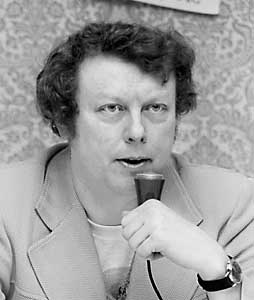
Gordon Rupert Dickson was a Canadian-American science fiction writer. He was inducted into the Science Fiction and Fantasy Hall of Fame in 2000.
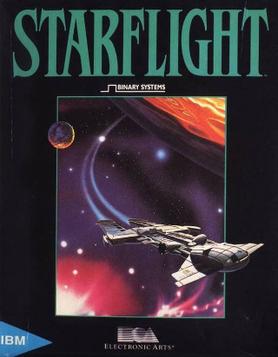
Starflight is a space exploration, combat, and trading role-playing video game created by Binary Systems and published by Electronic Arts in 1986. Originally developed for IBM PC compatibles, it was later ported to the Amiga, Atari ST, Macintosh, and Commodore 64. A fully revamped version of the game was released for the Sega Genesis in 1991.
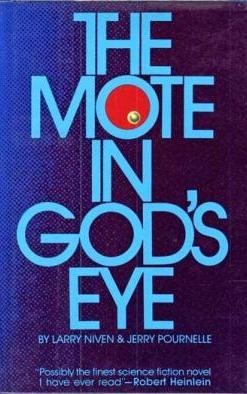
The Mote in God's Eye is a science fiction novel by American writers Larry Niven and Jerry Pournelle, first published in 1974. The story is set in the distant future of Pournelle's CoDominium universe, and charts the first contact between humanity and an alien species. The title of the novel is a reference to the Biblical "The Mote and the Beam" parable and is the nickname of a star. The Mote in God's Eye was nominated for the Hugo, Nebula and Locus Awards in 1975.

David Gerrold is an American science fiction screenwriter and novelist. He wrote the script for the original Star Trek episode "The Trouble with Tribbles", created the Sleestak race on the TV series Land of the Lost, and wrote the novelette "The Martian Child", which won both Hugo and Nebula Awards, and was adapted into a 2007 film starring John Cusack.

Nina Kiriki Hoffman is an American fantasy, science fiction and horror writer.
U.S. television science fiction is a popular genre of television in the United States that has produced many of the best-known and most popular science fiction shows in the world. Most famous of all, and one of the most influential science-fiction series in history, is the iconic Star Trek and its various spin-off shows, which comprise the Star Trek franchise. Other hugely influential programs have included the 1960s anthology series The Twilight Zone, the internationally successful The X-Files, and a wide variety of television movies and continuing series for more than half a century.

First contact is a common theme in science fiction about the first meeting between humans and extraterrestrial life, or of any sentient species' first encounter with another one, given they are from different planets or natural satellites. It is closely related to the anthropological idea of first contact

"The Heart of the Serpent" is a 1958 science fiction short story by the Soviet writer and paleontologist Ivan Yefremov.
"In Theory" is the 25th episode of the fourth season of the American science fiction television series Star Trek: The Next Generation, originally aired on June 3, 1991, in broadcast syndication. The episode was written by Joe Menosky and Ronald D. Moore and was the directorial debut of cast member Patrick Stewart.
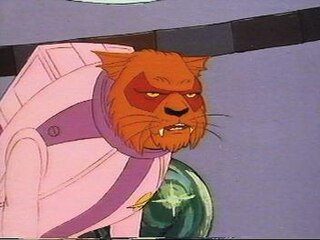
"The Slaver Weapon" is the fourteenth episode of the first season of the American animated science fiction television series Star Trek: The Animated Series. It first aired on NBC on December 8, 1973, and was written by Larry Niven. It was based on his original short story "The Soft Weapon". This episode was expanded to become the first half of a full-length novel by science-fiction author Alan Dean Foster as Star Trek Log Ten.
The Aliens is a 1963-1969 serialized science fiction story that ran in the back of Gold Key Comics' Magnus: Robot Fighter comic book series starting with issue #1. The series was produced by writer/artist Russ Manning. Originally, Manning assumed that the backup feature would be a one-shot, and borrowed the story from Murray Leinster's 1945 novelette First Contact. The publisher liked the story enough to make a regular back-up feature.
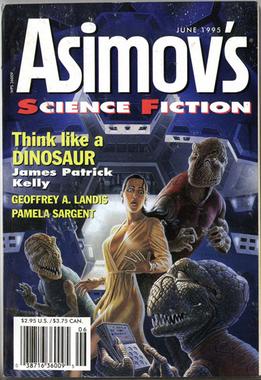
"Think Like a Dinosaur" is a science fiction novelette written by James Patrick Kelly, originally published in the June 1995 issue of Asimov's Science Fiction magazine.
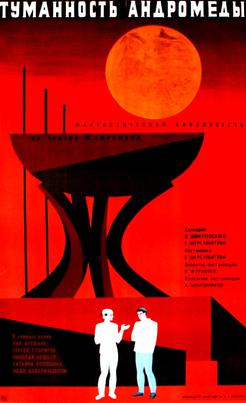
The Andromeda Nebula is a 1967 Soviet science fiction film starring Sergei Stolyarov and directed by Yevgeni Sherstobitov at the Dovzhenko Film Studios. The film was originally intended to be the first episode of a series of films, alternatively titled as The Andromeda Nebula: Episode I. Prisoners of the Iron Star, but the remaining parts were never made due to Stolyarov's death.

"Exploration Team" is a science fiction novelette by American writer Murray Leinster, originally published in the March 1956 issue of Astounding Science Fiction. It won the Hugo Award for Best Novelette in 1956.
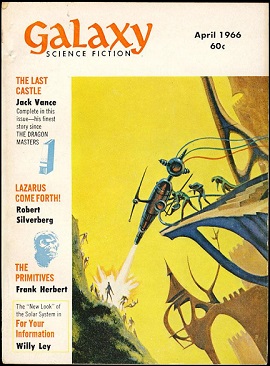
The Last Castle is a science fiction novella by American writer Jack Vance published in 1966. It won the 1966 Nebula Award for Best Novella and the 1967 Hugo Award for Best Novelette. It is about a future civilization of wealthy nobles who live in high-tech castles, which are maintained by an enslaved alien race, the Meks. After centuries of slavery, the Meks revolt, destroying the castles and slaughtering their elite inhabitants, until only one castle is left.
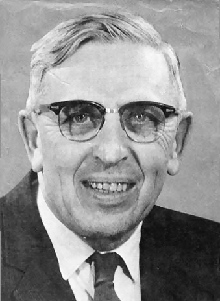
Clifford Donald Simak was an American science fiction writer. He won three Hugo Awards and one Nebula Award. The Science Fiction Writers of America made him its third SFWA Grand Master, and the Horror Writers Association made him one of three inaugural winners of the Bram Stoker Award for Lifetime Achievement. He is associated with the pastoral science fiction subgenre.
The following outline is provided as an overview of and topical guide to Star Trek:

The Enemy Stars, is a science fiction novel by American writer Poul Anderson, published in 1959 by J.B Lippincott in the US and by Longmans in Canada. Originally published in Astounding Science Fiction under the title We Have Fed Our Sea__, it was a nominee for the 1959 Hugo Award for Best Novel. The original title refers to a line in a poem by Rudyard Kipling.















